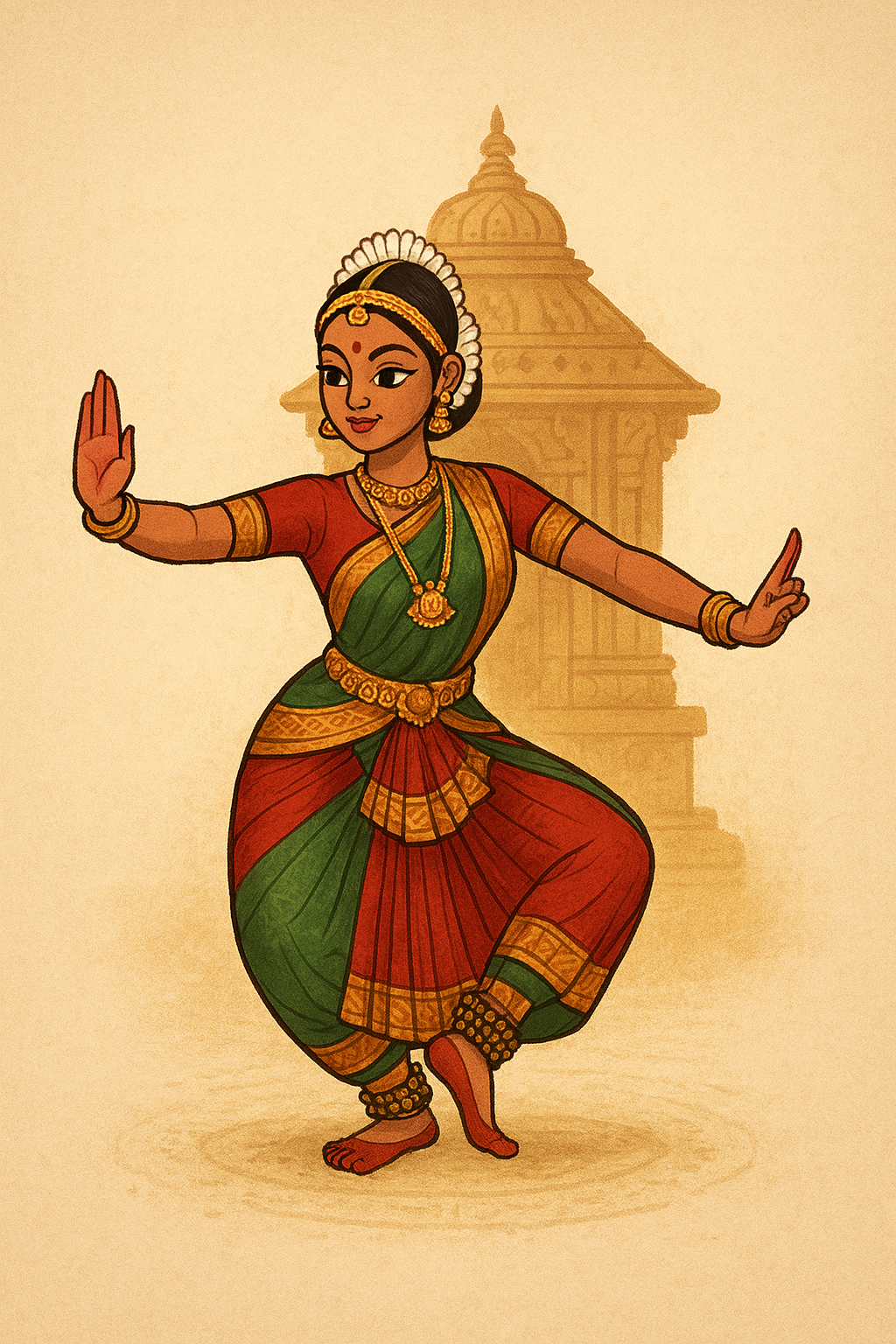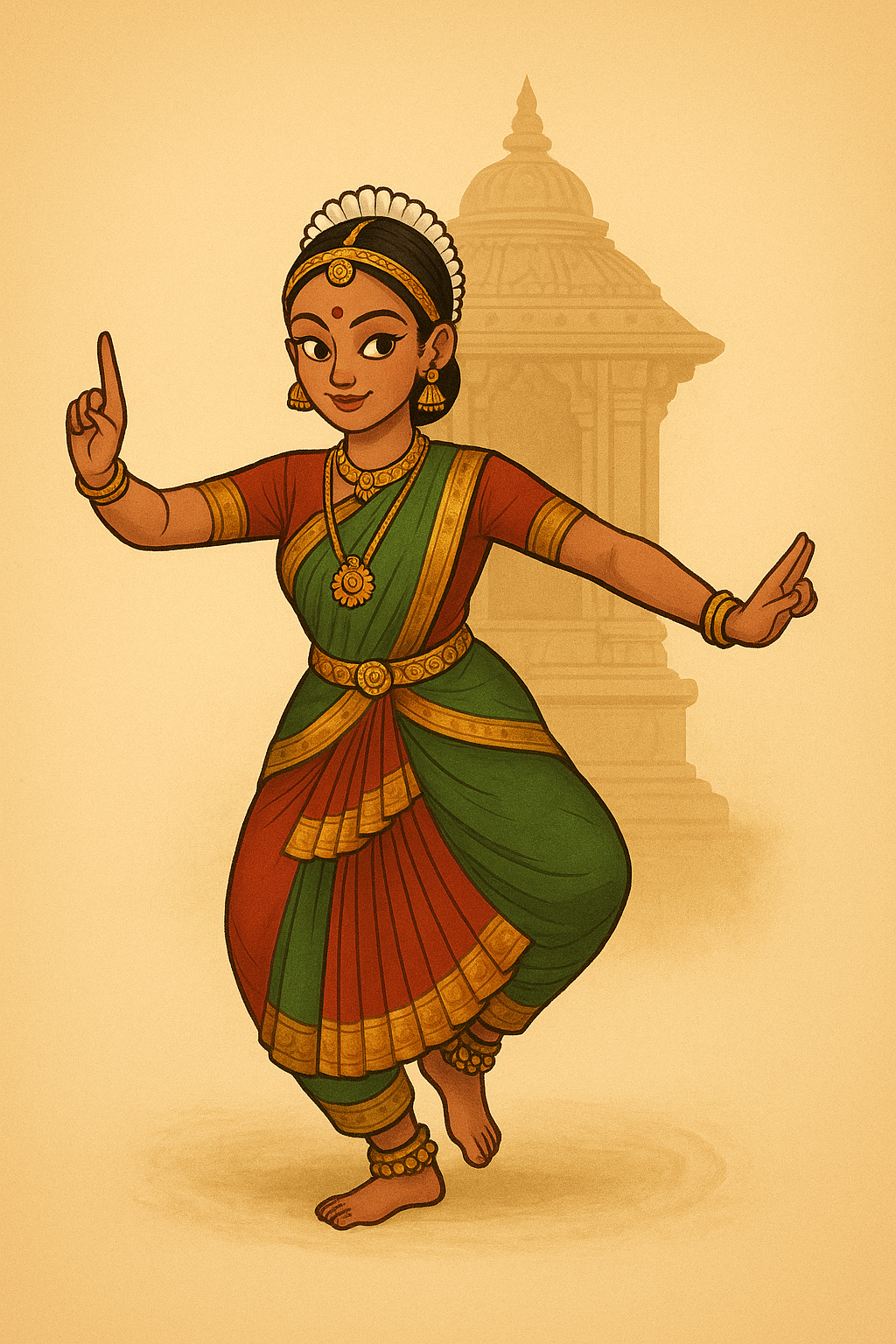Petals of a Flower
Published: September 5, 2025
What is Bharatanatyam? Well, Bharatanatyam is one of the classical dance forms of India. It was once performed in temple spaces as a dedication to the gods, by artists who were known as the Devadasis, meaning servants of gods. At that time, the dance form was known by other names such as sadir or dasiattam. It was much later that the dance was renamed as Bharatanatyam, combining the words Bhava (expressions), Raga (melody) and Tala (rhythm), with Natyam (dance).
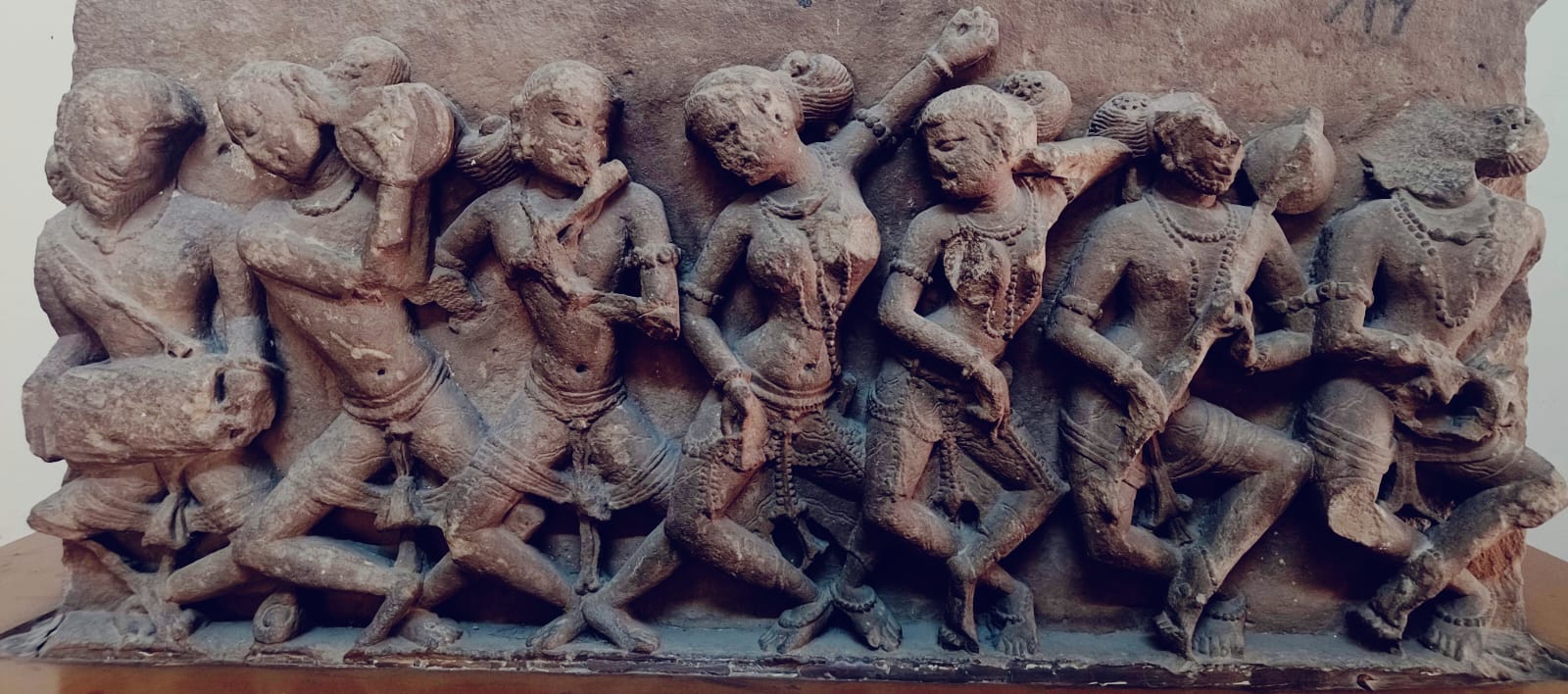
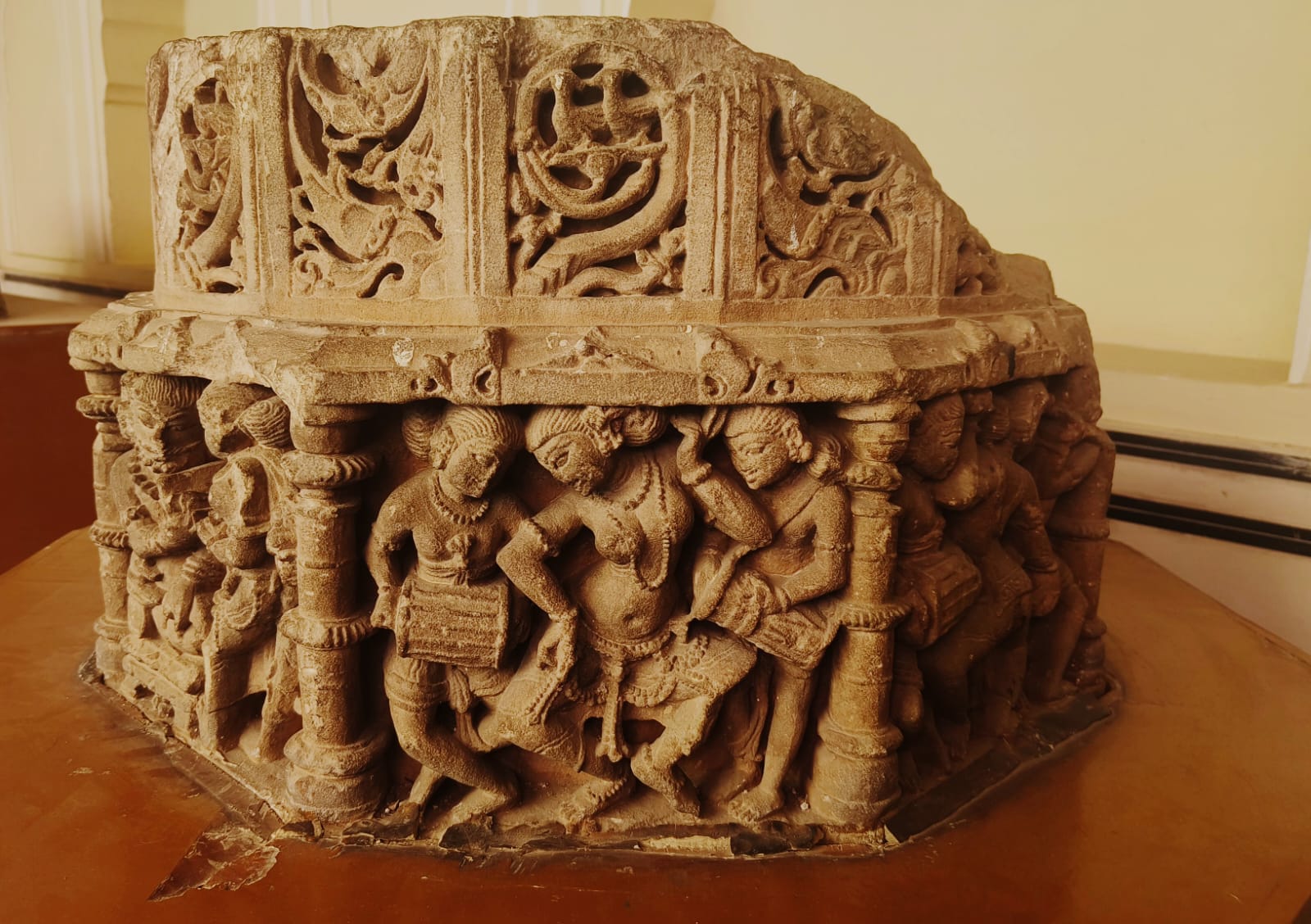

You might be thinking of questions, such as, what does one mean by a classical dance form? What are the various dance forms of India? How do we identify and categorise these dance forms? What are the characteristic features of Bharatanatyam and how is it different from other forms? And how did Bharatanatyam evolve over a period of time? Let us try to understand them.
Classical vs Folk Dance Forms
Dance forms in India are generally categorised into classical and folk forms. Folk forms emerge from rhythmic body movements observed during day-to-day activities of people such as harvesting, reaping or sowing. They may mimick movements as observed in the natural world. You will see folk dance forms where the body sways from one side to the other, similar to a paddy or wheat field swaying with the wind. Or, you will also observe dance movements resembling the movements of animals and birds. Every folk dance and its accompanying music reflect the culture, language and belief systems of a community. Therefore, each form is unique and gives us an insight into the history, geography and culture of the place and its people.
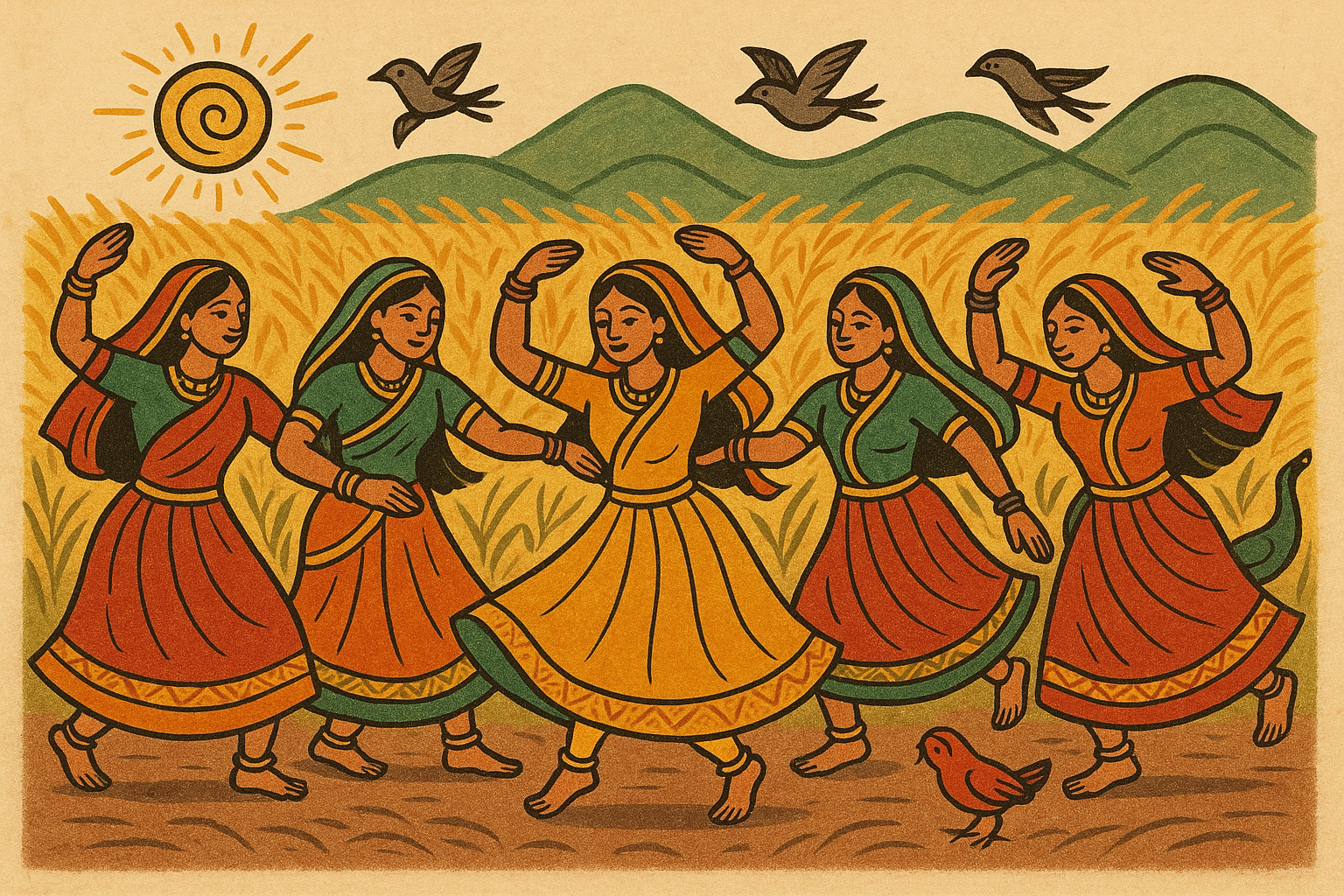
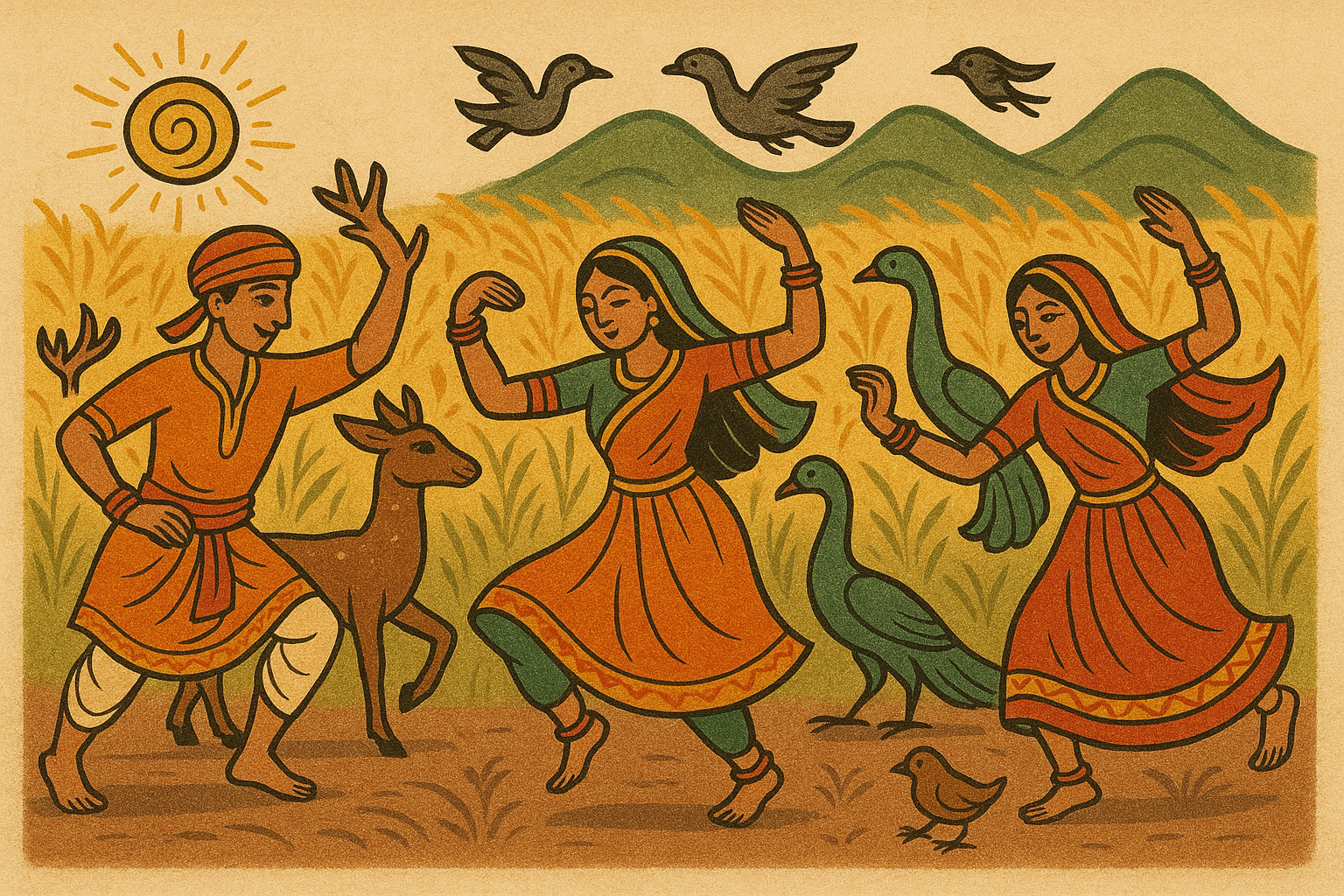
Reflecting on Cultural Roots
Can you think of a few folk forms and relate its songs, instruments, attire, and jwellery with the place and culture? What are your geographical and cultural roots? Did your grandparents perform folk dances and sing their traditional folk music? Would they perform it during their festivals such as the harvest festival or the regional new year celebrations?


The Garden of Dance Forms
The number of folk forms are numerous and would resemble a garden filled with flowers, each having its own colours, fragrances and design. Some examples of folk dance forms include Kalbelia and Ghoomar from Rajasthan, Bihu from Assam, Dandiya from Gujarat, Cheraw from Mizoram, Kaikottikali from Kerala, Rouf from Kashmir and many such more. I would love to hear your experiences of watching these dance forms or performing them. Let us connect and share our stories.
